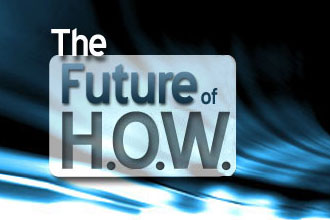Change. Cost. Control. Commitment.
 Every local church should be making a difference — a notable impact — on and in their local communities. Technology is a force multiplier and can be a helpful part of churches making an impression and fostering an environment for attendees. There are four aspects to helping facilitate this kind of impact that technology providers should consider:
Every local church should be making a difference — a notable impact — on and in their local communities. Technology is a force multiplier and can be a helpful part of churches making an impression and fostering an environment for attendees. There are four aspects to helping facilitate this kind of impact that technology providers should consider:
- Change
- Cost
- Control
- Commitment
Often, making a difference requires making a change. But, as we all know, change can be difficult. Change — not simply modification — is often hard and usually requires the art of subtraction before applying the addition of technologies.
Sometimes, we have the best intentions with less-than-the-best results. As leaders, we must apply the art of strategic subtraction by whittling down the existing technologies that are good, but no longer meet the needs of the venue. By first honestly evaluating existing tech, it’s easier to make changes and additions that provide more impact and add directly to the mission of the church.
Cost
These can be associated with budgeting for people, time and resources. If a church is not budgeting for all three, their true costs can add up very quickly. Help them understand not only the cost of the technology, but the operational and opportunity costs of taking the next steps into updated technology.
As important as hard costs, opportunity costs can also be very significant. Free, in particular, can turn out to be anything but free. For example, if you’re going to offer your facilities as free meeting spaces for civic, municipal or business events, the costs for cleaning, heating/cooling, projection/lights, audio technicians, etc. can all be expected. Those costs are very real, even though the venue might be “free”. Help churches think through the production world’s logistics as they embrace using their technology beyond the weekend service.
Control
It’s hard to manage more than we’re used to managing. Most churches stay small because they can manage (control) a smaller size.
In his book “Ladder Shifts,” Dr. Sam Chand tells us that many leaders limit their growth when they make the choice to stay in control of what they can touch and oversee. I won’t go into a full leadership discourse here as there are many far more qualified than myself to speak about this issue, but I will point out that when we have to have full control, we’re limited ourselves and the vision.
Technology has increased at an exponential rate, yet many churches are still leading and operating as though technology is the same today as it was a decade ago. The very real implications of limiting technology can curb the true effectiveness of investing in better tools for better outcomes.
Commitment
Commitment to constant evaluation. Because it’s hard to manage that which we don’t understand well, many leaders will fail to evaluate the effectiveness of a “good thing” and stick with the programs and processes that have become comfortable, even if the results aren’t there.
After consulting with and visiting hundreds of churches, I am of the opinion that churches tend to program themselves into stagnation. We can lack the commitment to evaluating that which we find familiar. Leaders are often visionaries with the capacity to imagine the future and usher people into new processes, programs, and paradigms. Having the commitment to both see a vision come to fruition and honestly evaluate it (and re-evaluate it, again and again) requires more than charisma and good communication skills. It means thinking differently and considering all of the options currently available.
Using metrics (defining the parameters, agreeing on the benchmarks and analyzing the data) is an important part of being committed to constant evaluation. We have a tendency to shy away from things we have a hard time measuring or, for whatever reason, are held too closely to be honestly evaluated. Fortunately, it’s easier than ever to get useful, meaningful data from our technologies usage patterns, making decisions far less emotional and far more practically-based.
Rethink, Reorganize & Remove
In evaluating what we must change, it’s helpful to consider what’s been working, what’s not working, and what is in the way. It’s one thing to talk about change; it’s quite another to actually make the hard choices and provide leadership during these transitions.
RETHINK
Often, technologies will simply become less effective over time. But we’re talking church leaders here, and they have a tendency to take patterns and make them traditions. Asking ‘what if’ questions is a helpful method of positioning the opportunity for current technologies in contrast to the operational limitations of today.
REORGANIZE
Often, older technologies are operated by volunteers who simply don’t know a better way. Training has laxed and new skills are traded for the comfort of consistency. Retraining volunteers will honor those who have served faithfully while also positioning the church for new volunteers.
Reorganization and re-equipping requires more than a nod to the past; it means a change over time that blends the old with the new. New technology must be accompanied by new training.
REMOVE (or REPLACE)
What was once a good idea is now verging on obsolescence. Honest evaluation will probably point the spotlight on technologies, systems, and processes that simply don’t fit into the context, vision or culture of the church today. There will always be a churn of change that simply replaces what was with what is; and the current what is will one day be replaced with what will be.
Leading people through a replacing old with new is a matter of relational caring, firm but gentle leadership and a constant re-casting of the vision for why we do what we do. It’s important to help church buyers understand that technology replacement should be tied to the vision, not the event (weekend services).
Perhaps nothing illustrates this greater than this famous set of verses from Ecclesiastes:
Ecclesiastes 3
A Time for Everything
1 There is a time for everything,
and a season for every activity under heaven:
2 a time to be born and a time to die,
a time to plant and a time to uproot,
3 a time to kill and a time to heal,
a time to tear down and a time to build,
4 a time to weep and a time to laugh,
a time to mourn and a time to dance,
5 a time to scatter stones and a time to gather them,
a time to embrace and a time to refrain,
6 a time to search and a time to give up,
a time to keep and a time to throw away,
7 a time to tear and a time to mend,
a time to be silent and a time to speak,
8 a time to love and a time to hate,
a time for war and a time for peace.
Change. Cost. Control. Commitment. These are clarion calls for updating from what was to what can be. How will you help churches to re-think, reorganize or remove old technology?





